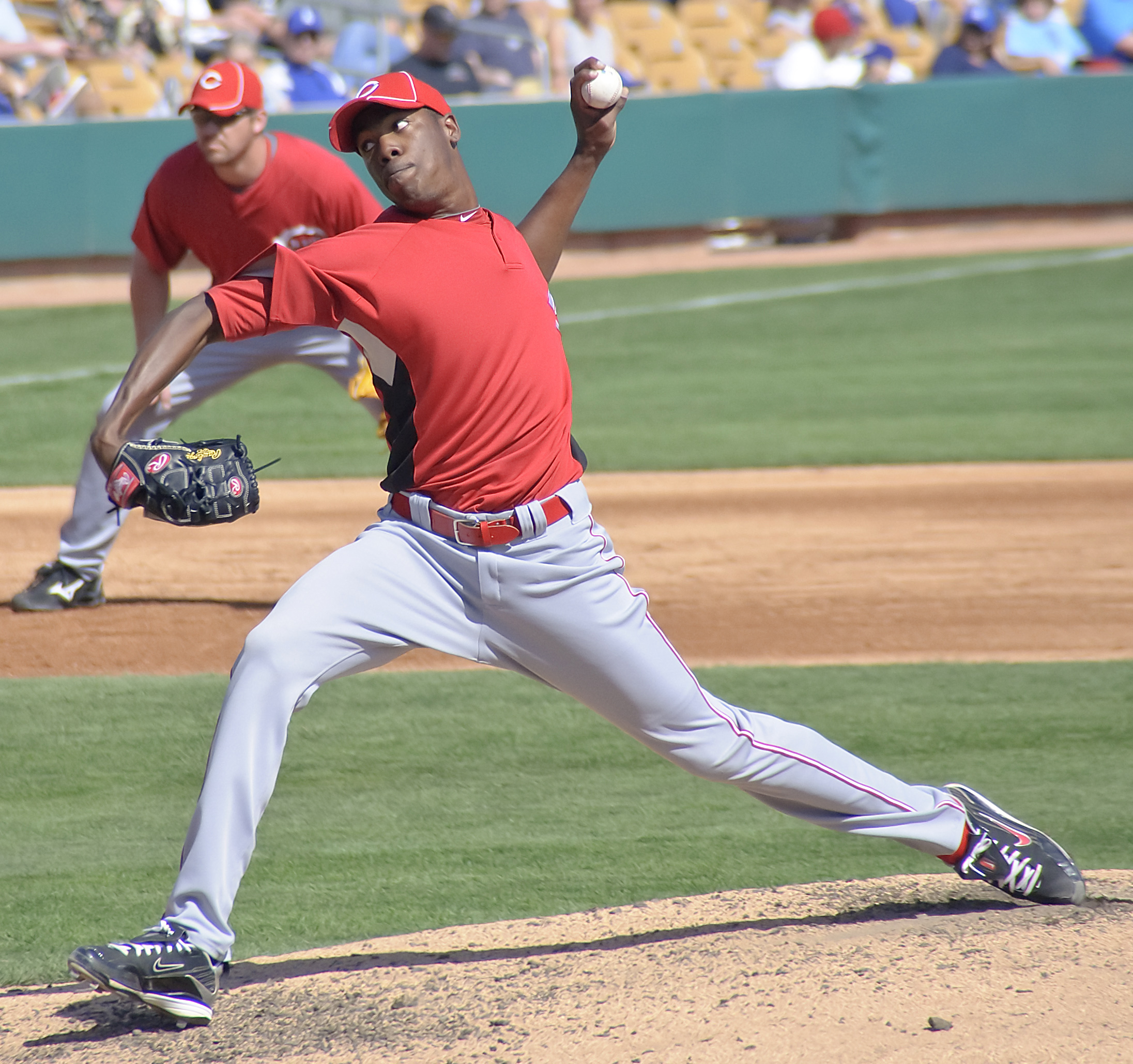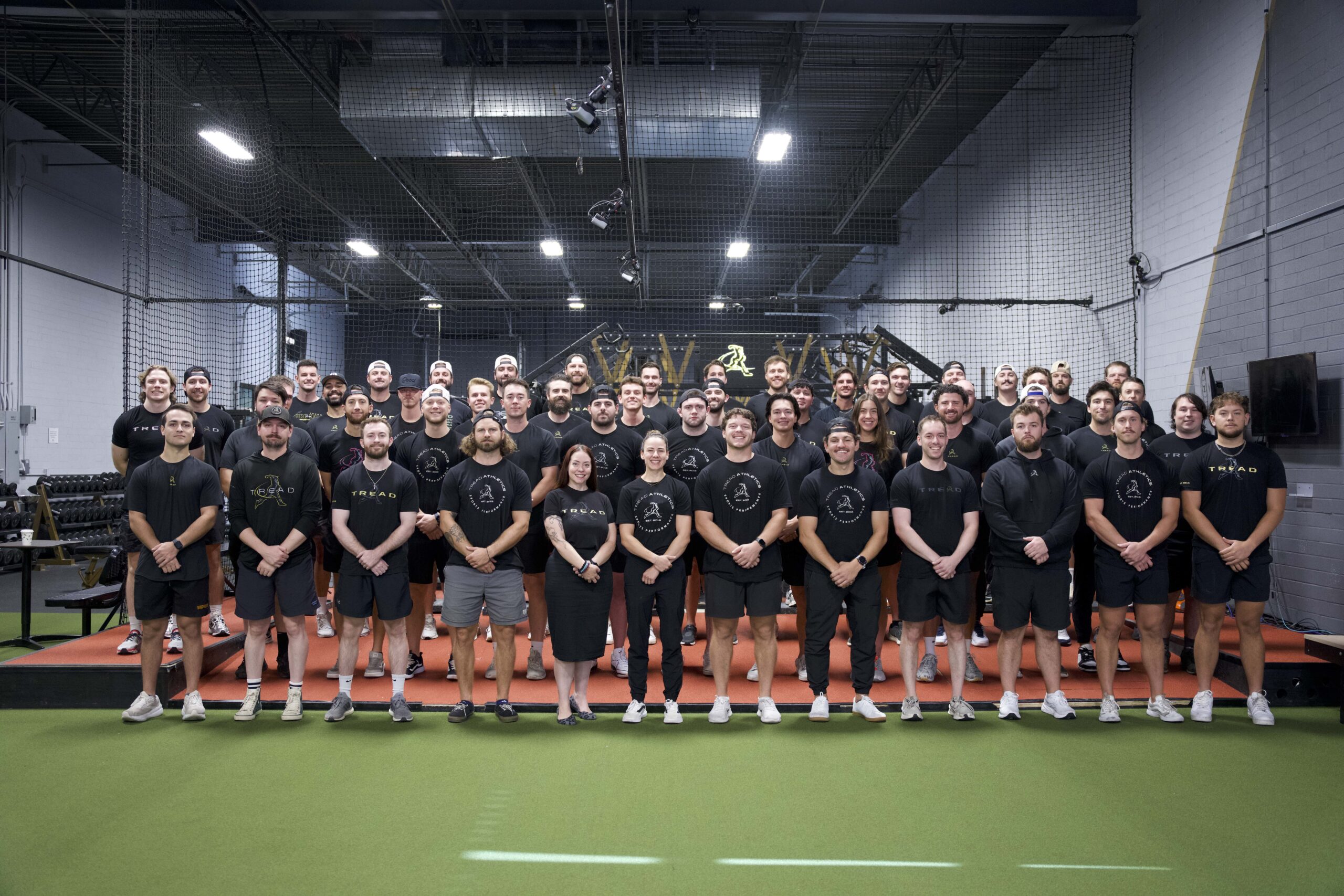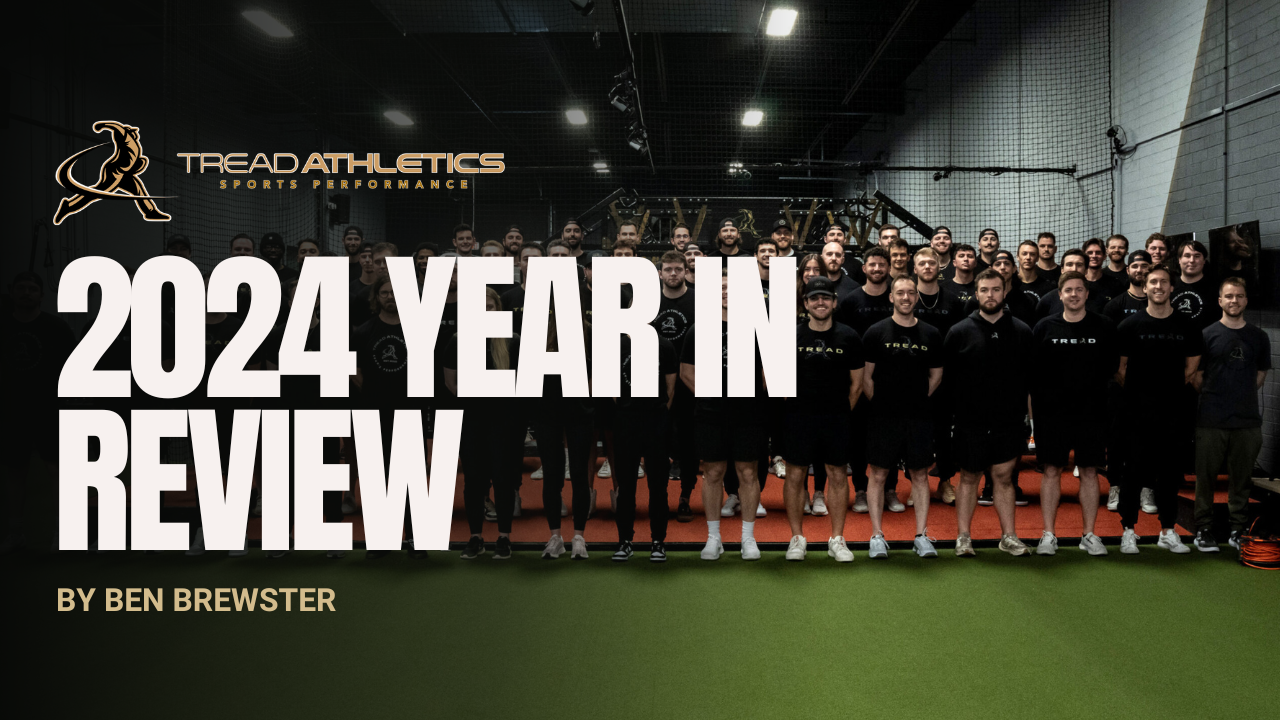Gaining velocity sucks. I get it. It’s not easy, and it can feel overwhelming not knowing why you haven’t been making progress.
Here’s the thing:
most high school and college pitchers don’t have the frame – and in particular, the muscle mass required to generate the elite velocity they are after.
Ready to invest 5 minutes? This article will open your eyes to the necessity of muscle mass – and strength – when it comes to maximizing your velocity development.
—
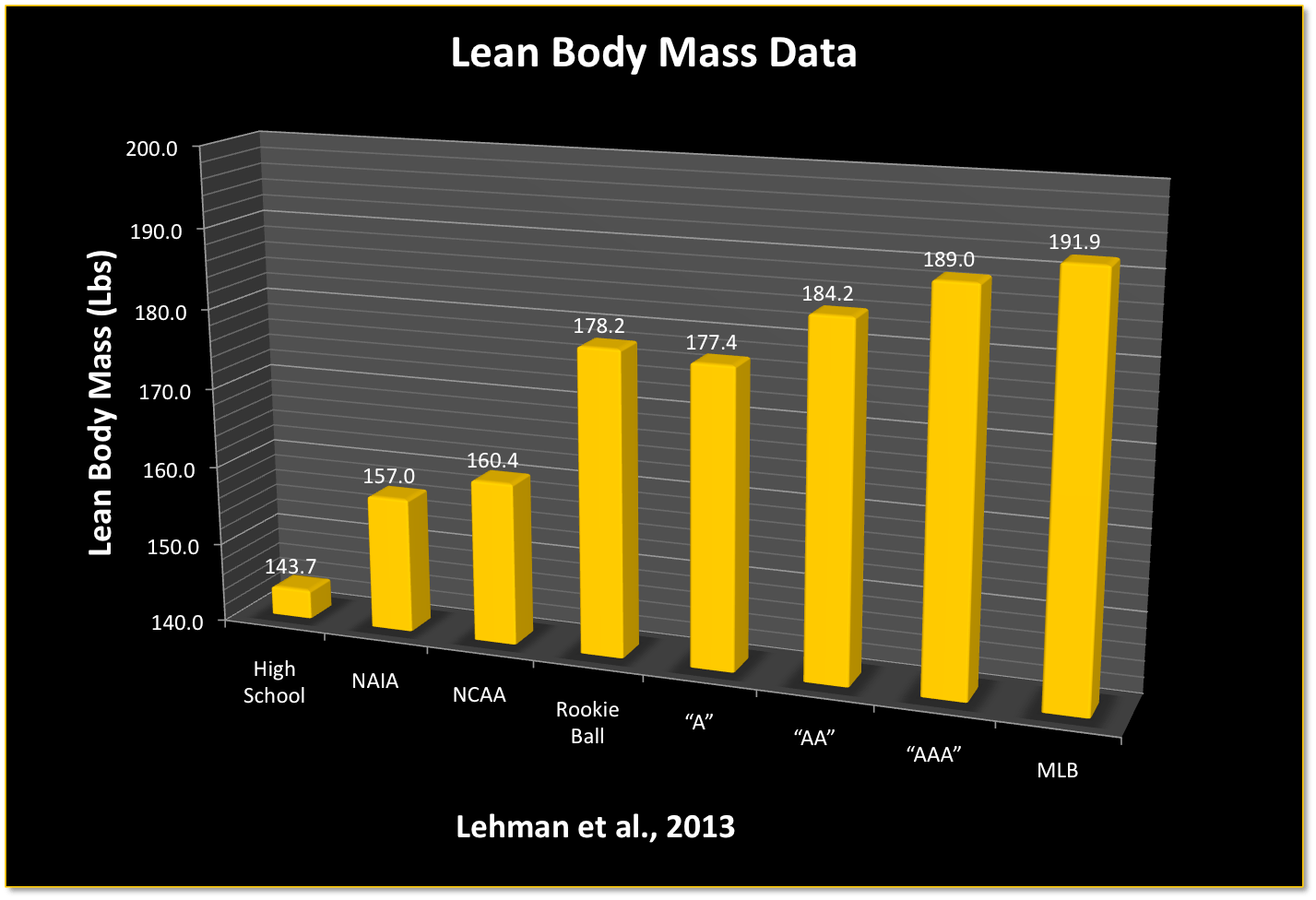 [To download a more detailed infographic of this data, click here.]
These massive jumps from high school to college ball, and college ball to the professional levels highlight how important lean body mass can be.
Some of these differences can be accounted for in terms of variance in height (taller people have more bone mass, for example, which counts towards lean body mass). However, there is a disproportionately large gap between levels, strongly suggesting that the differences are, in large part, due to muscle mass.
As you can see, these are just general correlations.
Big pitchers don’t always throw hard, and small pitchers do sometimes throw exceptionally hard (though this is exceedingly rare, and “small” for a big leaguer is still about 170 or 180 lbs).
—
[To download a more detailed infographic of this data, click here.]
These massive jumps from high school to college ball, and college ball to the professional levels highlight how important lean body mass can be.
Some of these differences can be accounted for in terms of variance in height (taller people have more bone mass, for example, which counts towards lean body mass). However, there is a disproportionately large gap between levels, strongly suggesting that the differences are, in large part, due to muscle mass.
As you can see, these are just general correlations.
Big pitchers don’t always throw hard, and small pitchers do sometimes throw exceptionally hard (though this is exceedingly rare, and “small” for a big leaguer is still about 170 or 180 lbs).
—
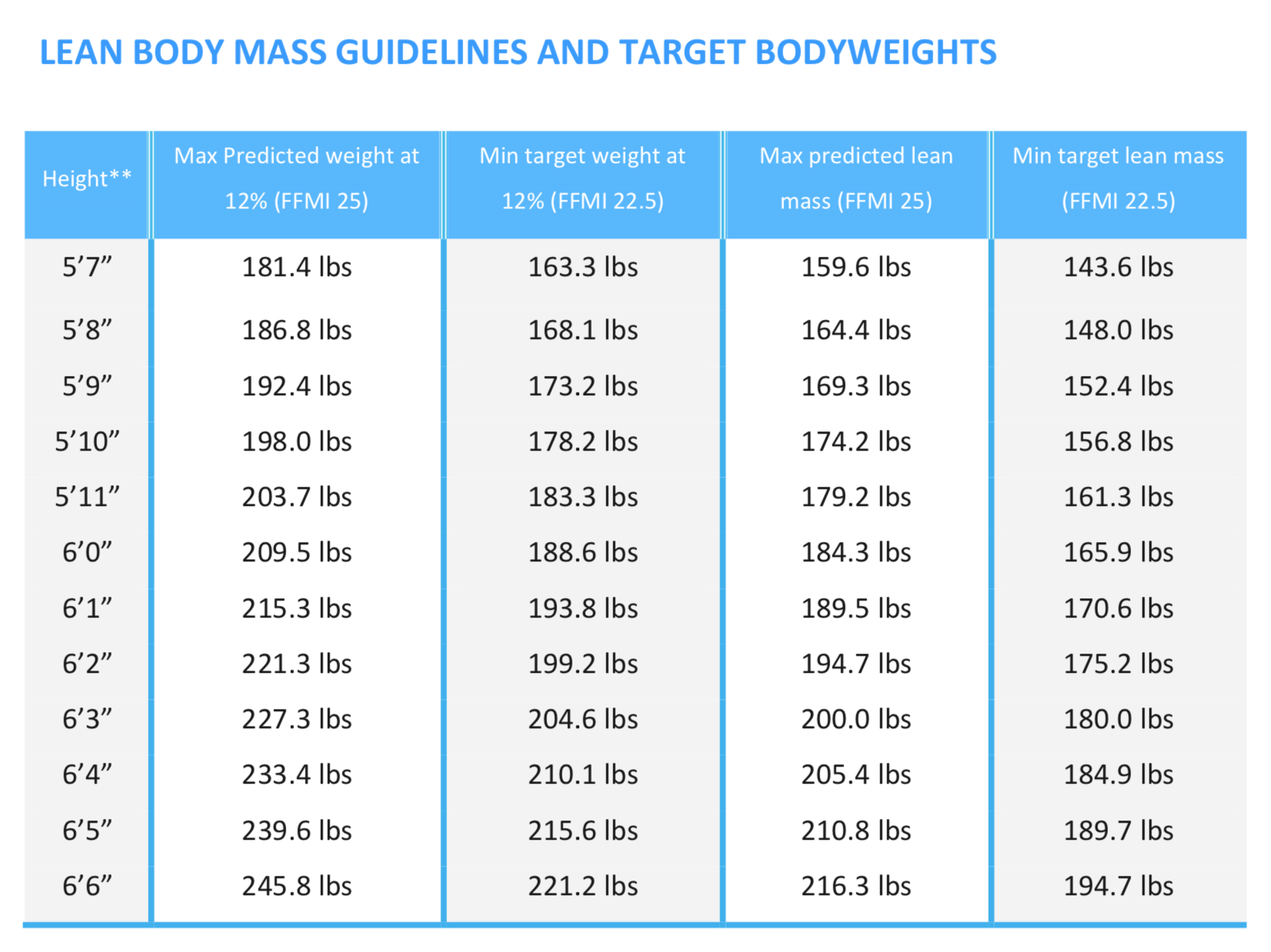
Why building muscle mass will help your pitching velocity
A muscle’s size is directly proportional to its maximum contractile strength. Period. Excellent pitching velocity is a result of being able to transfer a large amount of force into the baseball as quickly as possible. To create the arm speed necessary to do this requires a coordinated set of mechanics that efficiently generates and transfers energy from the muscles of the lower body to the trunk, to the shoulder, elbow, wrist and ball. The more force (energy) that can be created, and perhaps more importantly -transferred, the harder you will throw. Simple enough. What this means is that the most efficient mechanics in the world won’t lead to elite velocities if the pitcher in question is 120 pounds soaking wet! While having poor mechanics that don’t efficiently transfer energy is a large reason many amateur pitchers don’t have impressive velocity, a bigger reason is that they simply aren’t very strong or powerful. In fact, pitchers tend to be some of the least physically prepared athletes out there, especially at the high school level and below. —I’m about to blow your mind.
Check this out: Lean body mass is a measure of how much non-fat mass an individual is carrying. In other words, if a 200 lb individual is 10% body fat, that means that his fat mass is ~20 lbs and his lean body mass is ~180 lbs. Although lean body mass also includes other components such as bone, blood, organs, etc, these factors are more or less constant. Because directly measuring muscle mass requires very expensive equipment, lean body mass is actually a reasonably good way of measuring how much muscle somebody is carrying. In other words: if you get bigger and it’s not all body fat? Congratulations, you just gained muscle mass. But not all muscle mass is created equal – knowing where your personal deficiencies and limiting factors are helps determine the emphasis of your training and what parts of your body you will need to add the most mass to. The following chart shows how much lean mass players have in high school, college and professional baseball. [To download a more detailed infographic of this data, click here.]
These massive jumps from high school to college ball, and college ball to the professional levels highlight how important lean body mass can be.
Some of these differences can be accounted for in terms of variance in height (taller people have more bone mass, for example, which counts towards lean body mass). However, there is a disproportionately large gap between levels, strongly suggesting that the differences are, in large part, due to muscle mass.
As you can see, these are just general correlations.
Big pitchers don’t always throw hard, and small pitchers do sometimes throw exceptionally hard (though this is exceedingly rare, and “small” for a big leaguer is still about 170 or 180 lbs).
—
[To download a more detailed infographic of this data, click here.]
These massive jumps from high school to college ball, and college ball to the professional levels highlight how important lean body mass can be.
Some of these differences can be accounted for in terms of variance in height (taller people have more bone mass, for example, which counts towards lean body mass). However, there is a disproportionately large gap between levels, strongly suggesting that the differences are, in large part, due to muscle mass.
As you can see, these are just general correlations.
Big pitchers don’t always throw hard, and small pitchers do sometimes throw exceptionally hard (though this is exceedingly rare, and “small” for a big leaguer is still about 170 or 180 lbs).
—
Exploiting this information to throw gas
Realize that if you want to throw as hard as you are capable of, you’re going to have to build an appreciable amount of muscle mass and strength. Whatever your frame can hold, we want to come close to maxing that out. We go into this in-depth in Building the 95 MPH Body, but for now here is a useful set of realistic guidelines we came up with to shoot for.
Lean Body Mass Guidelines
**Find the row that corresponds to your height. For example, at 6’3”, I am about 215 lbs at 12% body fat. This puts me above the minimum target weight (~205 lbs at 12%), making it unlikely that my muscularity is a major limiting factor for velocity. Still, these tables predict as much as 12 lbs of lean body mass that could still be up for the taking. If you don’t know your body fat percentage, go here, and if you need help calculating your lean body mass, click here. —You have what it takes
If you’re a high school or college pitcher, and still 30 lbs away from the low end of these guidelines above, you have some work to do. While things like height and arm length are out of your control, gaining as much lean body mass as your frame can hold is entirely within your control. Get as big and strong as you can while maintaining excellent movement quality. Shoot to be within the general weight range for MLB pitchers of your height. It’s only one piece of the puzzle, but it’s one that many high school players are entirely overlooking. —References
- Hoffman JR, Vazquez J, Pichardo N, Tenenbaum GJ. Anthropometric and performance comparisons in professional baseball players. J Strength Cond Res. 2009;23(8):2173-8.
- Lehman G, Drinkwater EJ, and Behm DG. Correlation of throwing velocity to the results of lower body field tests in male college baseball players. J Strength Cond Res. 2013;27(4):902-8.
- Mangine GT, Hoffman JR, Fragala MS, Vazquez J, Krause MC, Gillett J et al. Effect of age on anthropometric and physical performance measures in professional baseball players. J Strength Cond Res. 2013;27(2):375-81.
- Mangine GT, Hoffman JR, Vazquez J, Pichardo N, Fragala MS, Stout JR. Predictors of Fielding Performance in Professional Baseball Players. Int J Sports Physiol Perform. 2013;8(5), 510-6.
- Nuttgen HG. Development of muscular strength and endurance. In Neuromuscular mechanisms for therapeutic and conditioning exercise, ed. pp.97-118. Baltimore: University Park Press. 1976.
- Spaniol FJ. Baseball Athletic Test: A Baseball-Specific Test Battery. Strength Cond J. 2003;(31):479-491.
- Young A, Stokes M, Walker ICR. and Newham D. The relationship between quadriceps size and strength in normal young adults. Ann. rheum. 1981;40(619).

